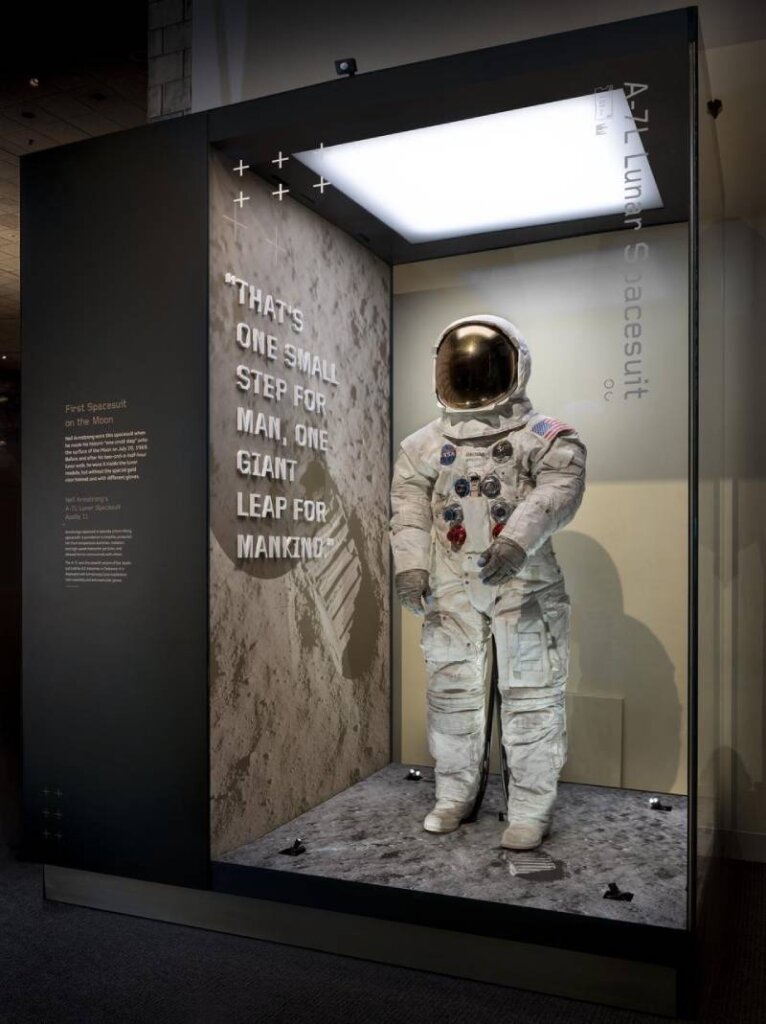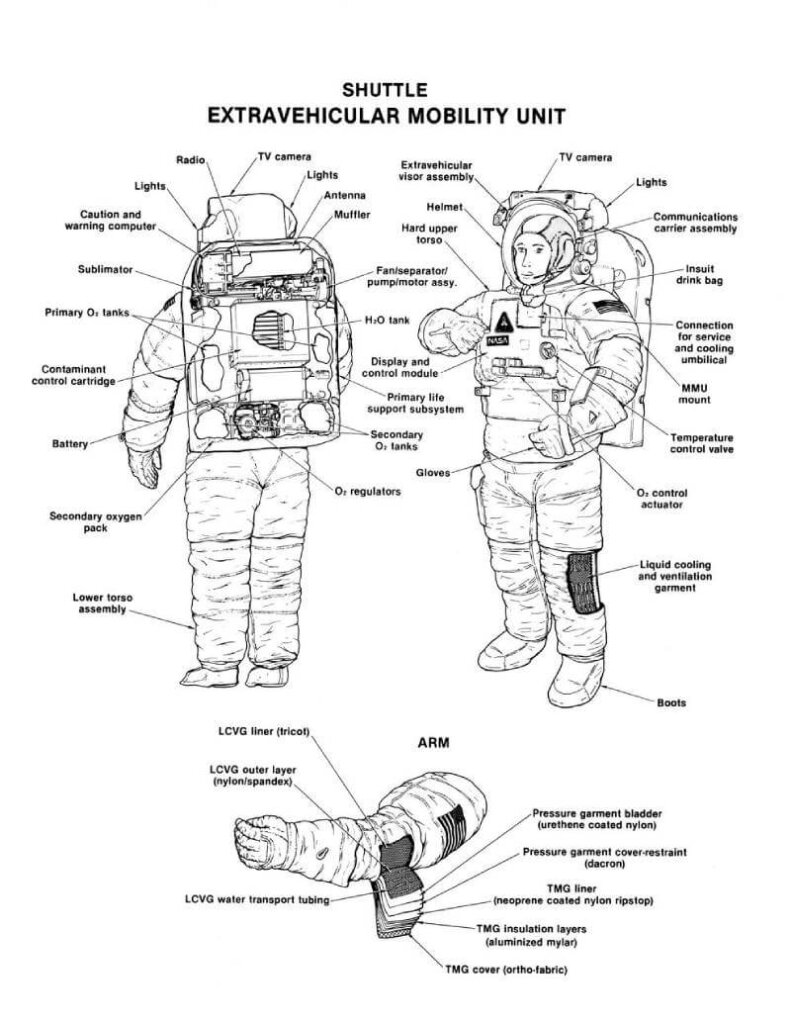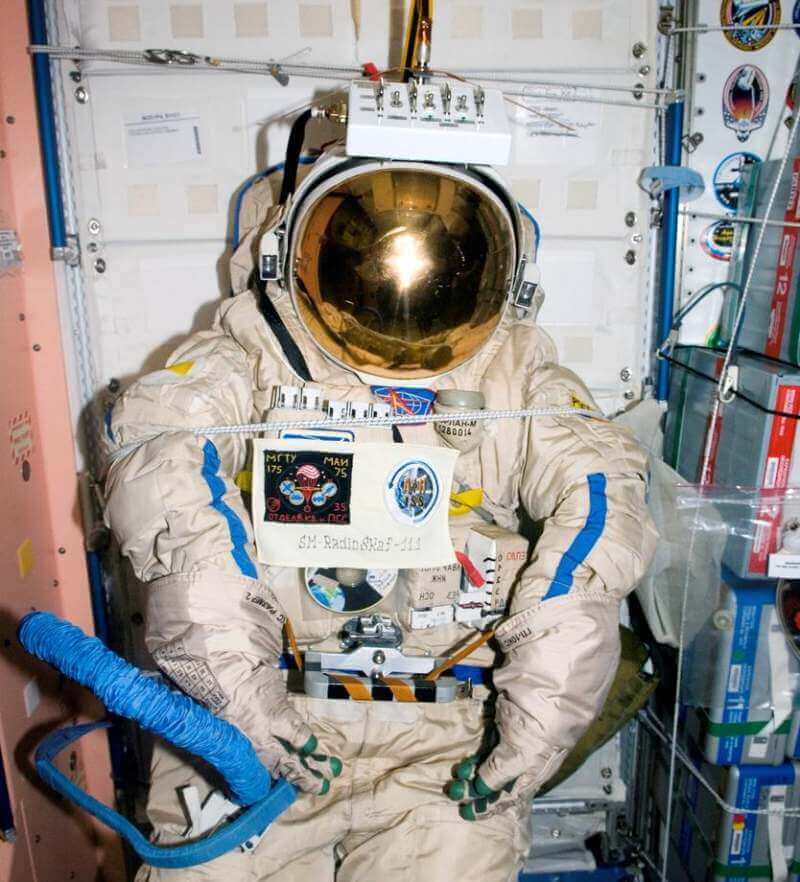Astronaut suits — officially called spacesuits or extravehicular pressure suits — are complex pieces of technology designed to keep the brave men and women who make it into space alive against all odds. The earliest spacesuits cost $15 million (over $80 million in today’s currency) to manufacture, while the latest spacesuits, designed by NASA and Axiom Space, are worth over $228 million.
That is, to borrow the words NASA uses to educate the youngest fans of space exploration because spacesuits are more than “the clothes astronauts wear in space.” Instead, an astronaut suit is “really a small spacecraft.”
Spacesuits need to be capable of multiple life-supporting functions:
- They must provide astronauts with oxygen.
- Spacesuits have to protect astronauts from severe temperature fluctuations that would otherwise kill them during a spacewalk.
- Astronaut suits have to offer protection against fast-moving micro-meteorites that might otherwise breach the suit by ensuring they are penetration-roof. In this sense, they’re full-body bulletproof armor suitable for space.
- Spacesuit helmets must be equipped to protect astronauts from the blinding sun.
- Astronauts have to have access to water during a spacewalk or on the surface of a planet (such as Mars) or satellite (like the moon), so water bottles are built in.
As you can imagine, spacesuits have undergone an impressive transformation since the early days of the space race, and the materials modern astronauts rely on are a far cry from those used in the suit Neil Armstrong wore. Let’s take a closer look!
What Was Neil Armstrong’s Iconic Apollo A7-L Suit Made From?
When Neil Armstrong became the first man on the moon, he technically never touched the surface. That honor belongs to his Apollo A7-L lunar suit — a spacesuit designed for maintenance activities outside the space shuttle as well as so-called extravehicular activity on the moon.

This iconic suit consisted of multiple layers, each using different materials. They include:
- Beta Cloth — a woven silica fiber cloth extremely resistant to temperature fluctuations and completely fireproof. It served as the suit’s outer layer.
- Rubber — to render the spacesuit airtight and ensure the astronaut had access to oxygen.
- Nylon — for flexibility, durability, and strength.
- Plastic connectors — joining the different segments of the spacesuit, they ensured flexibility.
- An aluminum neck ring and wrist lock rings — to allow a secure connection to the helmet and gloves.
- A brass zipper with a neoprene gasket — designed to ensure the astronaut suit was airtight, but also to allow astronauts to get in and out of it more easily.
Russian cosmonauts used spacesuits with broadly similar materials but a simpler design that reflected their intended purpose as a safeguarding measure during launch and reentry. Those suits are equivalent to the orange suits NASA’s astronauts use for the same purpose.
How Have Astronaut Suits Evolved Since The Early Days?
The Extravehicular Mobility Unit (EMU) NASA astronauts aboard the International Space Station use has 18 different parts and uses a total of 14 layers. These suits have come a long way!
Are you ready to explore? The materials used in the fabric-based portions of this modern astronaut suit include:
- Nylon lined with a system of plastic tubes to maintain the astronaut’s body temperature.
- Urethene-coated nylon serves as a pressure bladder, maintaining astronauts’ atmospheric pressure and protecting them from the vacuum of space.
- Dacron is a proprietary pressure-constraining material that helps the spacesuit keep its structural integrity.
- Neoprene-coated nylon ripstop protects the spacesuit against tears during spacewalks.
- A seven-layer aluminized Mylar component to protect astronauts against micro-meteorites.
- Ortho-Fabric (blending Gortex, Kevlar, and Nomex) to enhance breathability, mobility, comfort, and protection.
These fabric components are far from the only essential elements of the EMU astronaut suit, though!

These spacesuits wouldn’t work without a primary life support system to supply oxygen and remove carbon dioxide. The Displays and Control Module (DCM) is located on the suit’s chest and gives astronauts insights and controls. The suit’s electrical harness is used for comms, and there is also a secondary life support pack as backup.
This astronaut suit also has a Service and Cooling Umbilical that does a few cool things, including recharging spacewalkers’ primary life support packs while they’re outside the ISS. Then there’s a battery, a contaminant control cartridge, a hard upper torso, arms, gloves, and of course, the helmet.
Aspects of this modern spacesuit that not many people think about include the “maximum absorption garment” (yes, a diaper!) and in-suit drinking bag.
There are also parts to store the astronaut suit and make it easier to get into and out of (as with medical gloves, astronauts are said to “don” and “doff” their spacesuits). That’s a complex procedure that becomes easier with practice but requires multiple people.
Conclusion – What Are Spacesuits Made Of?
We hope this look at two iconic spacesuits gave you some idea of what goes into making the tiny spacecraft astronauts call home when they leave the shuttle or space station. Of course, each country takes a slightly different approach to the manufacture of space suits. In NASA’s case, astronaut suits are the result of a partnership between the space agency and the best private contractors in the field, giving NASA’s astronauts access to cutting-edge technologies designed to keep them alive in the harsh environment of space.
Each new type of mission calls for a new astronaut suit. When NASA’s astronauts finally make it to Mars, their spacesuits will incorporate elements of the EMU but with entirely different designs and new materials to reflect the nature of that mission.
The push for Mars and the emerging interest in private space exploration is influencing future astronaut suit design as we speak, and it probably won’t be long before you get to read about yet another revolution in “astronaut clothing.”
Are these suits comfortable? Designers do their best, but spacesuits will probably never feel like soft PJs. Still, we hear the view is great from up there, and no astronaut would trade the experience for anything in the world.

